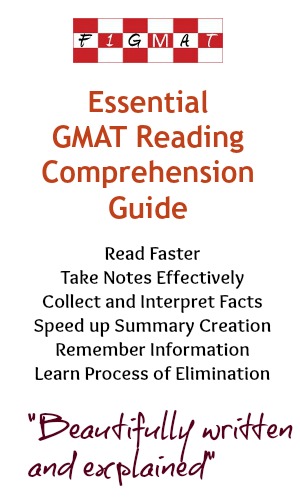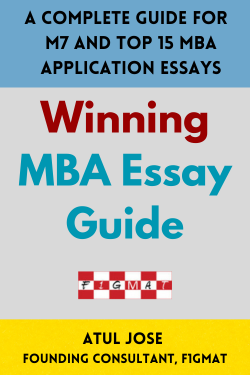GMAT Reading Comprehension primary purpose questions are seeking your ability to find structure in a passage, except that the test creators want to see how you interpret the author’s intent.
Finding the structure of a passage or the reason for the author to use an argument in paragraph one before paragraph two requires a breakdown of the passage into paragraphs. Unlike other summary creations, while writing a summary for questions on the structure of the passage or purpose questions, write it from the perspective of the author – the intent.
The test creator would use answer choices with terms like ‘development’, ‘phenomenon’, ‘historical artifact’ and other fancy terms that you are unlikely to find in the passage. Spending time guessing the broader generalization of an event/occurrence is a wasteful exercise. Go straight to the answer choices.
Commonly quoted interpretation of an event in GMAT RC purpose question are:
• Occurrence – not frequent to generalize
• Proceeding – concerning legal or administration
• Episode - mostly related to health
• Incident - mostly related to health or security
• Circumstance – often a nuanced explanation of an event
• Occasion – used to contrast an event from another
• Phenomenon – mostly used to describe a unique development
The verb used to describe how the author interprets the event would also vary:
• Assess – breakdown the information
• Discuss – dives into the specifics with examples to make a point
• Evaluate – would mostly involve numbers
• Estimate – likely to include some predictions of a future event
• Debate – takes a strong position against the premise in the initial paragraph
• Dispute – quotes an opposing point of view to reach another conclusion
• Study – comprehensive breakdown of multiple factors
• Explore – transitions into topics that are larger or smaller in scope
• Review – performs a comprehensive study of various factors
The treaty initiated the unification of the European community in areas of criminal justice and intergovernmental cooperation. However, the advantages of the Euro as a currency over national currencies for stronger European economies have yet to be established. Almost all European states are following an economic cycle of boom and bust, with UK’s economy showing a high correlation with that of the US. Lack of a federal structure to control inflation, interest rate and taxes in the European Union have made it difficult for ECB to formulate effective monetary policies.
The success of the EU depends on each state, and weak links in the system can destabilize the entire union, as has been the case with the crisis in Greece, Ireland and Spain. With a unified monetary policy, the central bank has exposure to debts in weak economies. Politicians of strong economies must convince the parliament, the people and other member states about a justifiable bailout package. Since the risk on Euro increases with interest rate hikes and a higher economic growth further increases the risk of inflation, strong economies naturally opt for interest rate hikes to compensate inflation. Each country, its economy and people have different sensitiveness towards inflation and interest rate hikes. When an economy is faced with debt, unemployment and slow demand, interest rate hikes can be catastrophic. With the abolishment of independent monetary policies, Euro faces the risk of dissolution.
<End of Passage - GMAT RC Primary Purpose>
Q) The purpose of the passage is in:
a) providing the context of a historical phenomenon and the long-term advantages
b) underlying one interpretation of a historical phenomenon
c) assessing the merits and weaknesses of a historical phenomenon
d) discussing the historical importance of a treaty
Answer
Clearly, the author is against the implementation of the Euro. Eliminate.
The author has maintained right from paragraph two that the implementation of the Euro has many disadvantages. Keep it.
c) assessing the merits and weaknesses of a historical phenomenon
The merits are hardly mentioned; hence, this answer choice is wrong. Eliminate.
d) discussing the historical importance of a treaty
Although the author provides the context for The Maastricht Treaty, the passage’s primary purpose is not about the treaty. Eliminate.
e) evaluating the liabilities of a historical phenomenon
Option B broadly answers the primary purpose of the passage.
Correct Answer: B


